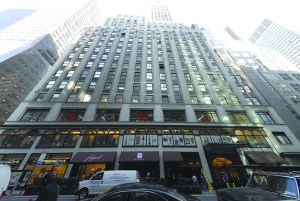
When Ashish Parikh went looking for lenders late last year to refinance the nearly $30 million in debt that his company, Hersha Hospitality, assumed when it purchased the Hilton Garden Inn in Tribeca, he received some level of interest from 30 lenders, and six term sheets.
“If this was 2006 or 2007, there would have been 100 bidders and 100 term sheets,” said Mr. Parikh, Hersha’s CFO. But Mr. Parikh also compared the lending environment to June of 2009, when Hersha purchased the hotel. He said the company received “zero level of interest” from lenders in refinancing the debt.
“You can’t call this market frothy,” Mr. Parikh said. “But, it’s come a long way from the first half of 2009.” Hersha received a $32 million mortgage in late January from mortgage REIT Apollo Commercial Real Estate Finance, which has a larger principal balance, a lower interest rate and an extension of the loan terms.
After a subdued 2009, many lenders are once again sticking a toe in the commercial real estate lending pool. But lending terms bear little similarity to the hot environment of, say, 2006.
Lenders are insisting that any deal have a strong, experienced sponsor behind the loan, and are looking closely at both the sponsor’s track record as an owner-operator as well as at its balance sheet, said Paul Fried, managing director at Traxi LLC. “Lenders will talk about the strength of ownership before they talk about anything else,” he said.
Also, an asset’s performance and location are at the top of lenders’ punch lists. The days of lenders’ parting with their money on projections of increasing rents and lower vacancy are history. Instead, many borrowers must pass what David Schechtman, senior director of investment services firm Eastern Consolidated, called “stress testing.”
“They are taking in-place income, and discounting it by 15 to 20 percent, figuring that many landlords will have to offer rent concessions,” Mr. Schechtman said. “There are no more leaps of faith.”
Also, borrowers must be willing to put more money into their deals, or, as Mr. Parikh put it, “50 percent [loan-to-value ratio] is the new 70 percent.”
THE 340,000-SQUARE-FOOT 42-story office building at 53rd and Madison Avenue, 515 Madison, hits the bull’s-eye on most of today’s lending parameters. On Dec. 31 of last year, 53rd Street Associates LLC, a joint venture of the Gural and Hemmerdinger families, received a $70 million loan from Wells Fargo Bank for the purchase of the fee and leasehold interest from the Malloy and Sheffer families.
The property, 89 percent leased at the time of loan closing, had a 15-year history of 97 percent occupancy, and recently underwent extensive lobby and entranceway renovations. New, prebuilt office space was also added.
“Some of the smaller tenants in the building had been there for 20 years,” said Paul Talbot, principal of Newmark Knight Frank, which arranged the financing. (The managing partner of the ownership entity, Jeffrey Gural, is an owner of Newmark Knight Frank.)


